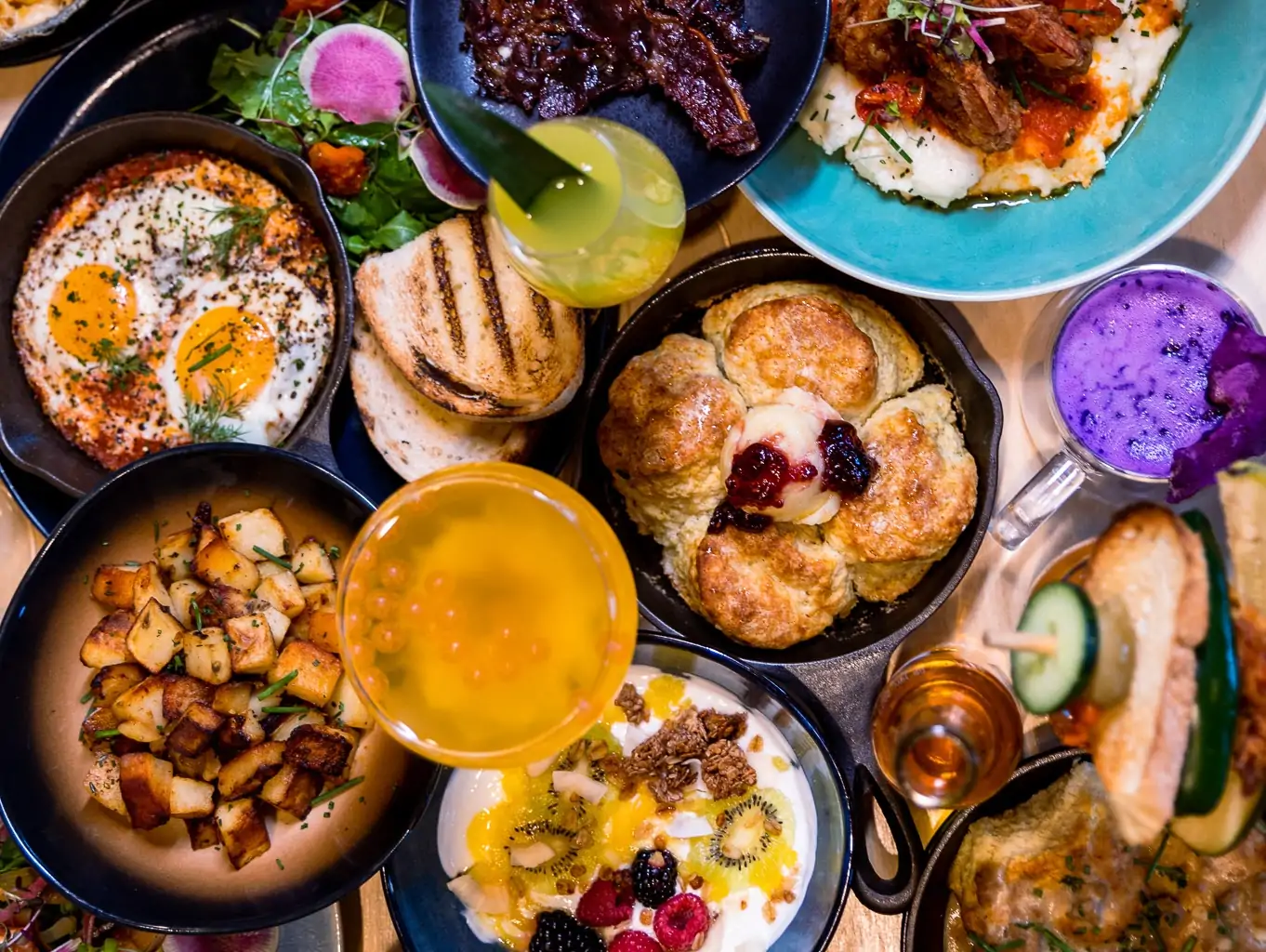OpenTable’s webinar series, In it Together, tackles key topics facing the industry during the COVID-19 crisis. What does hospitality look like in a time of emergency? How can we support our communities today, both financially and emotionally? Hosted by our COO Andrea Johnston, the platform brings together restaurant leaders and experts to foster conversation and share advice during uncertain times. Register for free for upcoming webinars.
Across the globe, restaurants are slowly opening their doors to diners, whether through pickup and delivery services, partial-capacity dining rooms, or outdoor spaces. For many operators, that means adopting their business, brand, and concept to a new and constantly changing reality.
In this week’s In it Together discussion, OpenTable’s Andrea Johnston spoke with Lynn Juang, COO of hospitality creative agency Brand Bureau, and Juan Correa, the New York restaurateur behind Llama Inn and Llama San. Together, they dove into best practices for reopening – keeping brand and design top of mind.
“We are social beings – we crave connection and interaction,” said Juang. “Restaurants, bars, and cafes are here to stay in some way, shape, or form. Why do people go out to eat and drink? We have to identify those core drivers and start to think about more creative ways to answer [that need] in a new situation.”
Adapt your menu to new circumstances
“We don’t like the takeout business,” Correa laughed. “But it’s going to be part of the new normal. We’re going to have to live with that and get much better at it.”
When NYC restaurants were first ordered to shut down, Correa’s top concern was for his staff’s safety and financial well-being. A few weeks ago, he started takeout and delivery so that he could keep paying employees and keep the businesses afloat. That shift required considerable changes to his Peruvian menu, crafted by his chef and partner Erik Ramirez.
“Erik cooks in a specific manner, and traditionally our food hasn’t traveled very well,” he said. “We were nervous about customers receiving something that didn’t meet [our] standards.” They shortened their menus to highlight dishes that would travel well (think quinoa salad over ceviche) and reduce food waste. The updated menu also reflected a range of prices to accommodate a wide audience of guests.
Be as nimble and flexible as possible
Juang’s advice to clients has been to treat this period as one long friends and family preview – to test a concept, see what happens, and be ready to test something else. Gauge how guests are responding to new offerings, and how they’re interacting with your space, food, and packaging. Solicit feedback and react to it.
“Some clients want to dip their toes into takeout, or open their façade to the street,” she said. “It can’t be at a high cost, because in a couple of weeks the guidelines might be different, or there could be another lockdown. It’s a hard balance, and being patient and flexible is key.”
Because future regulations remain uncertain, Juang prefers light lifts over big ones. Her clients are layering in new sanitation stations and maximizing space between tables, and some are even experimenting with design solutions like modular partitions and screens. But since any solution may have to be temporary, now may not be the time for a full redesign.
Reconsider staff roles and processes
For Correa, reopening means learning new health guidelines, including increased sanitation of surfaces, social distancing, staff health checks, and more. It also means rethinking their employees’ functions and responsibilities.
At Llama Inn, it’s all hands on deck – everyone pitches in with all tasks. At Llama San, roles are more precise, with one staff member clearing tables and another running food. For Correa, the latter model feels more appropriate to this moment. “How do we craft roles so we can minimize the exposure a given guest has to our staff?” he asked. He is looking at ways for guests to interact with only one or two employees per visit.
With evolving roles comes new processes. For example, guests at Llama San and Llama Inn will receive a single disposable menu printed front and back, along with a digital menu option for those who prefer not to touch a menu. Instead of a massive wine list, guests will see an abbreviated wine list that’s updated weekly.
Ultimately, these changes come down to learning to be hospitable while also being efficient. “With more options in front of them, it’s harder for guests to make up their minds, and they have more questions for servers,” he added. “We want to provide all the hospitality, but we also want to limit the time of exposure.”
Tell your story through a new medium
In addition to being a standout chef, Ramirez has excellent taste, Correa said. His partner brought in bamboo packaging for their takeout orders to make sure the food is presented well, and also prints cards that explain each dish – the ingredients, components, and how to assemble or reheat it if it gets cold.
“Our food is Peruvian and has a lot of context – clients are not necessarily familiar,” Correa said. For example, Llama Inn’s Lomo Saltado features hanger steak, a scallion crepe, and toppings like avocado and rocoto crema and is intended to be assembled before eating. “We’re just starting, but we’re trying to learn and listen to what guests are telling us.”
Communicate safety measures with humanity
For many operators, balancing the sterility of sanitation procedures with warm hospitality poses a challenge. Juang recommends a messaging approach that blends transparency and honesty with vulnerability.
“This is all new for everyone,” she said. “It’s being honest about what we know and what we don’t know, and what we’re doing based on the information we have. That brings humanity to communications. And that’s what we’re looking to do – to rebuild trust with everyone walking through our doors and eating our food and drinking our drinks.”
Start with a tight, well thought-out operation, and layer on personality around that. Also, be clear that safety is a two-way street, and restaurants have expectations of guests, too. That doesn’t mean plastering signs on every wall reminding guests to wash their hands, it means straightforward, warm messaging emphasizing that we’re all in this together.




